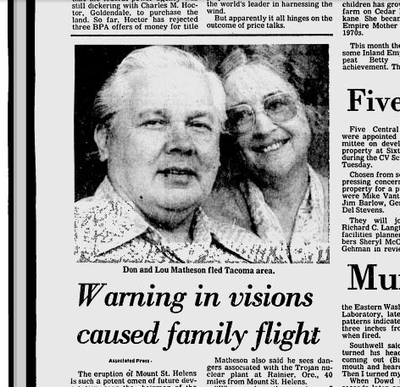40 years ago in Washington: Signs of Mount St. Helens’ eventual eruption mount

Mount St. Helens had been relatively quiet for a week, but on April 19, 1980, scientists issued a warning.
They had noticed “great amounts of ground shaking and avalanching caused by local earthquakes.” They also saw evidence that heat was causing the snow and ice to melt faster than usual.
They announced that they were putting additional monitors on the north side of the mountain to “assess the hazard it presents to the Spirit Lake area and the North Toutle River drainage.”
On April 23, a government scientist said “sharp, successive earthquakes and frequent explosions” should be a sign to area cabin owners to “leave the uneasy peak.” The elderly owner of the Spirit Lake Lodge, Harry Truman, still stubbornly refused to evacuate.
Some people were heeding the omens. A leader of the Puyallup Tribe said he had moved his family away from the Puyallup-Tacoma area to Spokane. The reason: “You ignore visions to your own detriment. … The mountain spoke.”
However, most people still regarded the mountain as an entertaining sideshow. On April 24, syndicated columnist Georgie Anne Geyer wrote that she was on a commercial flight out of Sea-Tac Airport, when the pilot announced that he was avoiding Mount St. Helens as a precaution. The passengers’ reaction? They were “genuinely disappointed.”
On April 25, 1980, The Spokesman-Review reported an alarming development. A bulge on the north side of the mountain’s crater was growing. It was now 250 feet high. Scientists were worried that it could cause a landslide, which could reach as far as the north fork of the Toutle River and possibly raise the level of Spirit Lake.
In fact, this bulge was a portent of something far more catastrophic.